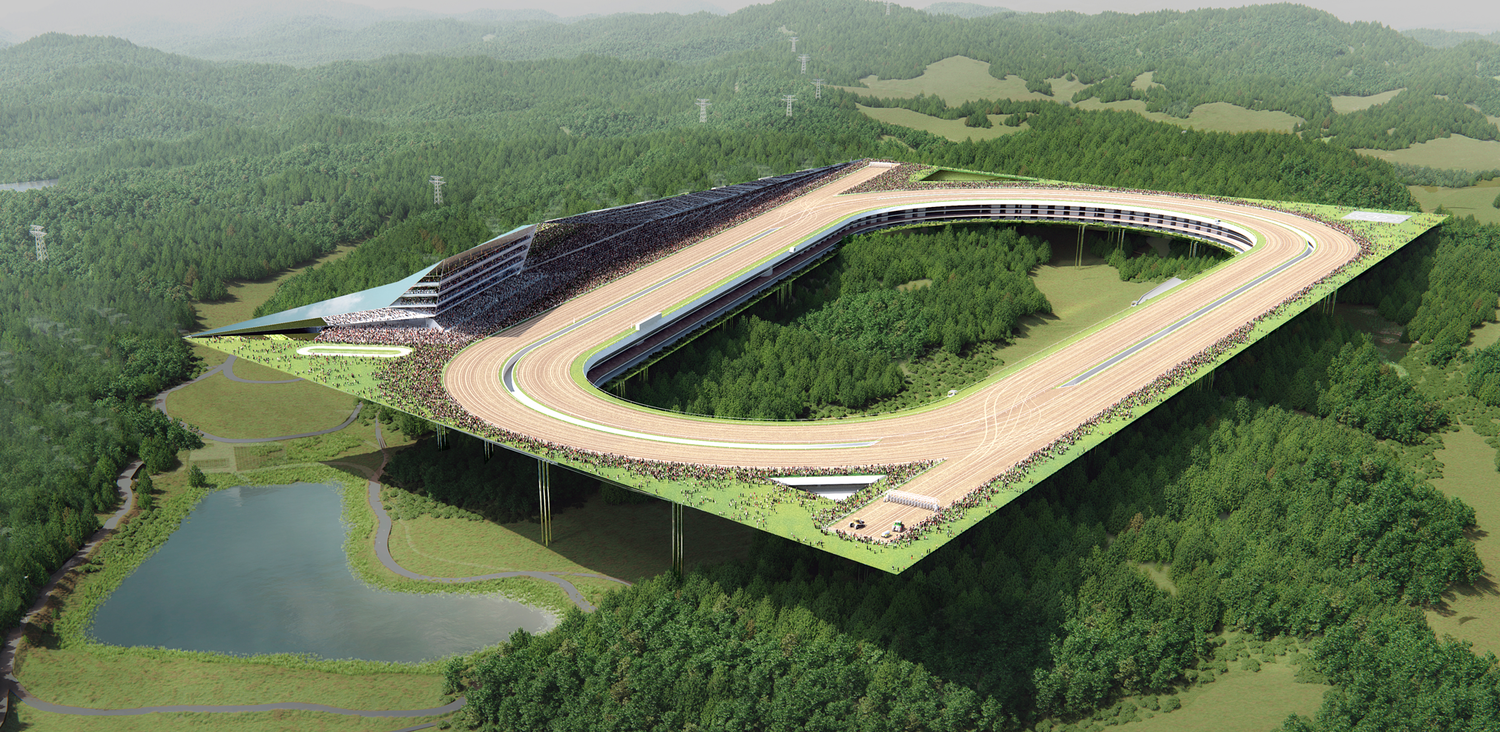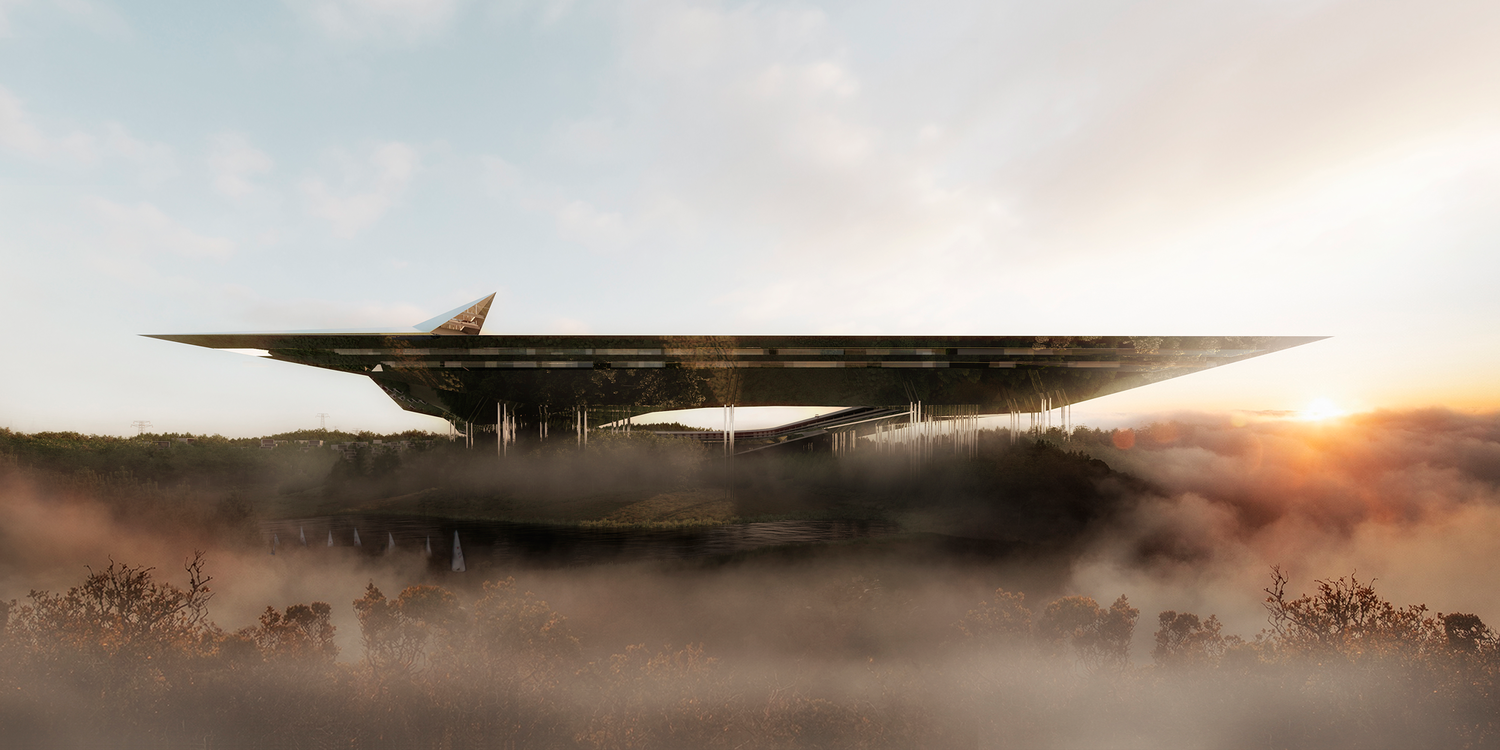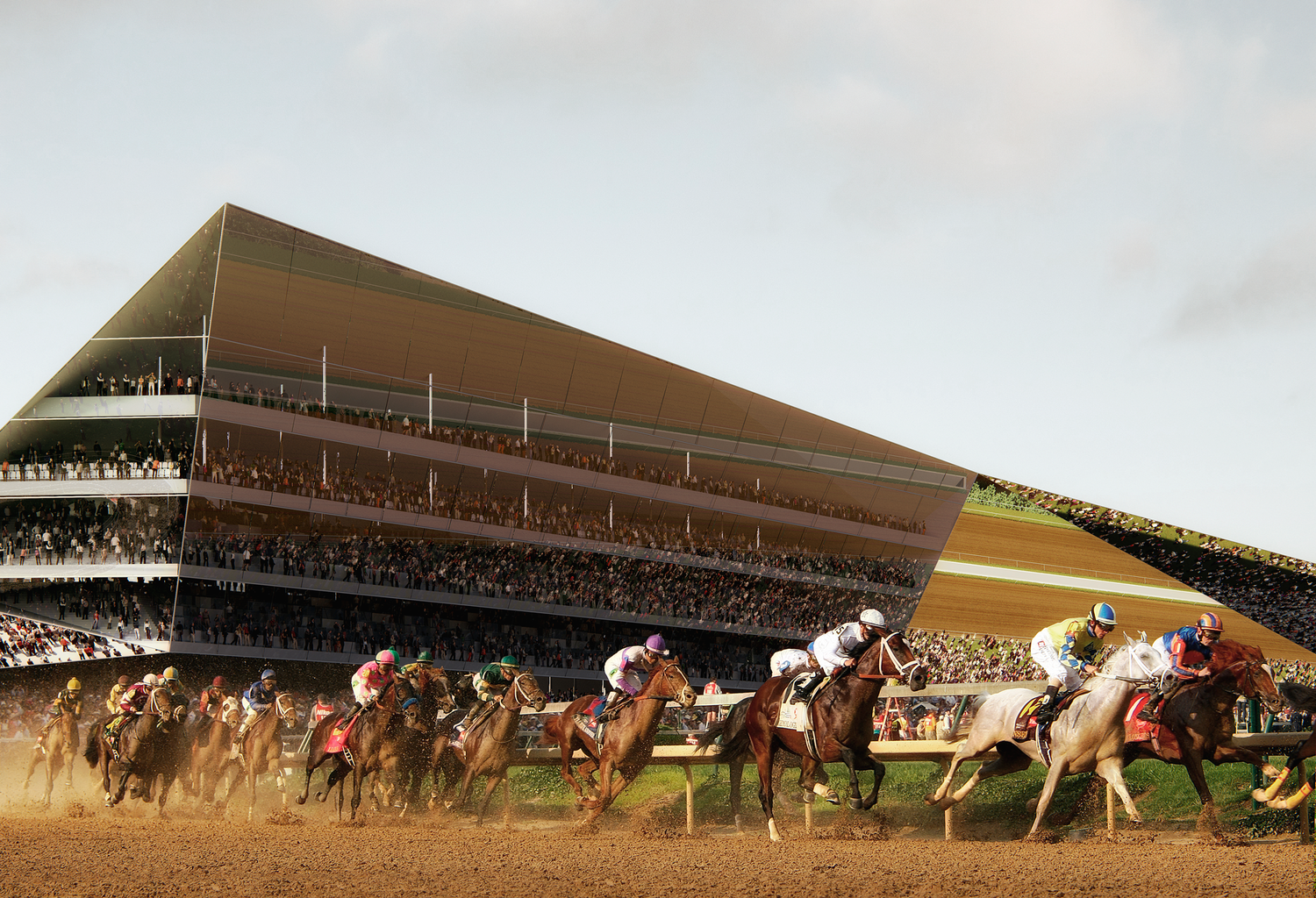
You are using an outdated browser.
Please upgrade your browser to improve your experience.


|
Loci_City | Projects | Studio | News | Press | Contact | Fr | En |
| Loci_City | Projects | Studio | News | Press | Contact | Fr | En |
« Pegasus Horsepark »
“No Foot-print” for the future generations. A Hippodrome on stilts to liberate the natural territory and the theme park dedicated to equestrian sports and activities.

| Program | Construction of a Horse park |
| Site | Yeongcheon region, South Korea |
| Floor Area | 43 430sqm / 142 500sqft |
| Cost of construction | € 200 000 000 000 / $225 000 000 000 |
| Timetable | International competition 2015 |
| Project Owners | Korea Racing Authority (KRA) |
| Certification | Construction Net Zero |
Since the time of the ancient Greeks, man has dreamt of creating a flying city. Like Atlantis, the mythological underwater city, the city in the clouds is created in a primordial element, not water this time, but air. From Jonathan Swift to Georges Lucas, and passing by Jules Vernes, these floating cities are both a symbol of physical liberty and of spiritual elevation. In days gone by, the celestial city was a utopia, but in the 21st century it has become a much more realistic project. It is not so much a question of flying as of elevating and of letting ourselves be guided by this invitation on a journey of contemplation. In the skies, the horsepark is an airborne city, a flying city that affords the most spectacular views. Situated in a naturally hilly and wooded landscape, our project elevated the racecourse above the land so as to preserve the existing flora. All of the functions and integrated amenities were integrated into the structure beneath the racetrack, so that the equestrian park could use the maximum amount of natural landscape for horse riding and related activities, and the absolute minimum impact was caused on the natural landscape. The whole complex was entirely self-sufficient in energy, notably through bio-mass gas and geo-thermal energy production.


